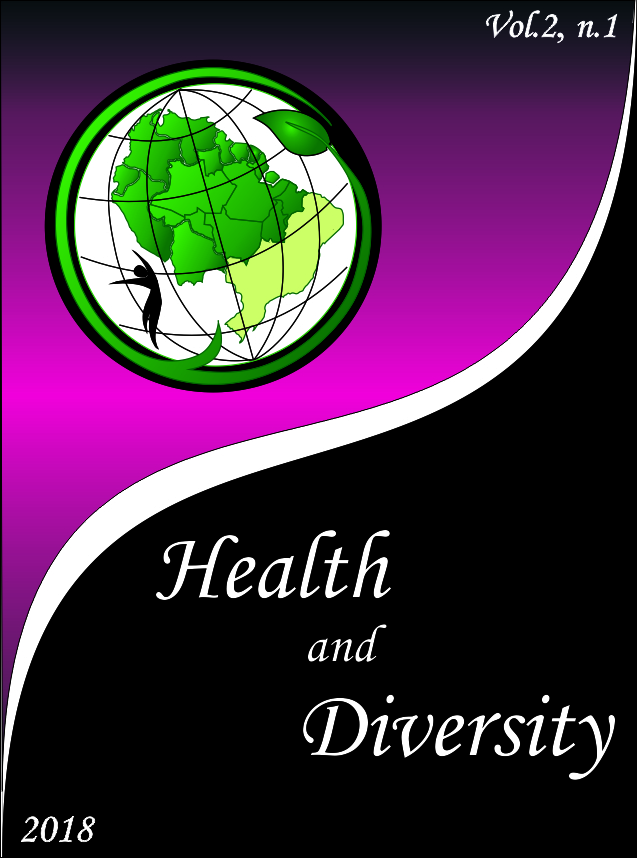Growth hormone and prolactin production in a patient with partial primary empty sella: a case report
DOI:
https://doi.org/10.18227/hd.v2i1.7501Keywords:
Acromegaly, hyperprolactinemia, empty sellaAbstract
Introduction: The empty sella syndrome is a neuroradiological diagnosis that shows pituitary gland reduction or flattening, with a prevalence of around 8% to 35% in general population. Objective: We report a case in which there is an association between partial primary empty sella syndrome and high levels of growth hormone and prolactin. Methods: A 67-year-old man, from Coronel Mota Hospital, Boa Vista / RR, with no specific complaints, was referred to the Endocrinology ambulatory to investigate a modification in sella area. After anamnesis and physical examination, acromegaly research began. Pituitary hormones and magnetic resonance imaging of the sella turcica with contrast were requested. Results: General physical examination revealed acromegalic face, nasal enlargement, macroglossia and frontal cutis verticis gyrata. Radiological examination showed partial empty sella. Laboratory evaluation confirmed the clinical suspicion of acromegaly and revealed hyperprolactinemia presence. It was decided to treat the patient with cabergoline 1.5 mg / week and to refer him to a center specialized in neuroendocrinology. Conclusion: This report shows a case of partial primary empty sella and co-production of growth hormone and prolactin, making this association interesting, since somatotropinomas are mostly (80%) macroadenomas. In addition, the underdiagnosis of acromegaly is highlighted, since the symptoms are nonspecific and insidious, leading to high morbidity and mortality and reduction of the affected patients life expectancy.
Downloads
References
Aruna, P; Sowjanya, B; Reddy, PA; Krishnamma, M; Naidu, JN. Partial Empty Sella Syndrome: A Case Report and Review. Indian Journal of Clinical Biochemistry, v. 29, n. 2, p. 253-256, 2014.
Chiloiro, S; Giampietro, A; Bianchi, A; Tartaglione, T; Capobianco, A;Anile, C; de Marinis, L.DIAGNOSIS OF ENDOCRINE DISEASE: Primary empty sella: a comprehensive review. European Journal of Endocrinology, v.1, p. 275-285, 2017.
De Marinis, L; Bonadonna, S; Bianchi, A; Maira, G; Giustina, A. Primary Empty Sella. The Journal of Clinical Endocrinology and Metabolism, v. 90, p. 5471–5477, 2005.
Katznelson, L; Laws, ER; Melmed, S; Molitch, ME; Murad, MH; Utz, A; Wass, JAH. Acromegaly: An Endocrine Society Clinical Practice Guideline. The Journal of Clinical Endocrinology & Metabolism, v. 99, p. 3933-3951, 2014.
Liu, W; Zhoub, H; Neidert, MC; Schmidd, C; Bernays, RL; Ni, M; Zhoua, D; Jiaa, G. Growth hormone secreting pituitary microadenomas and empty sella- An under-recognized association? Clinical Neurology and Neurosurgery, v. 126, p. 18-23, 2014.
Manuylova, E; Calvi, LM; Hastings, C; Vates, GE; Johnson, MD; CaveJr, WT; Shafiq, I. Late presentation of acromegaly in medically controlled prolactinoma patients. Endocrinology, Diabetes & Metabolism Case Reports, v. 2016, 2016.
Neto, LV; Abucham, J; De Araujo, LA; Boguszewski, CL; Bronstein, MD; Czepielewski, M; Jallad, RS; Musolino, NRC; Naves, LA; Júnior, ARO; Vilar, L; Faria, MS; Gadelha, MR. Recommendations of Neuroendocrinology Department from Brazilian Society of Endocrinology and Metabolism for diagnosis and treatment of acromegaly in Brazil. Arq Bras Endocrinol Metab, v. 55, n. 2, p. 91-105, 2011.
Rahman, M; Torres, IJ; Alkabbani, A; Salvatori, R; Rodríguez, FJ; Hinojosa, AQ. Synchronous GH and prolactina secreting pituitary adenomas. Endocrinology, Diabetes & Metabolism Case Reports, v. 2014, 2014.
Sasagawa, Y; Hayashi, Y; Tachibana, O; Oishi, M; Fukui, I; Iizuka, H; Nakada, M. Clinical characteristics of acromegalic patients with empty sella and their outcomes following transsphenoidal surgery. Pituitária, v. 20, p. 403- 408, 2017.
Vilar, L; Kater, CE; Naves, LA; Freitas, MC; Fleseriu, M. Endocrinologia Clínica, Rio de Janeiro, Guanabara Koogan, 2016.
Zuhur, SS; Kuzu, I; Ozturk, FY; Uysal, E; Altuntas, Y. Anterior Pituitary Hormone Deficiency in Subjects with Total and Partial Primary Empty Sella: Do All Cases Need Endocrinological Evaluation. Turkish Neurosurgery, v. 24, p. 374-379, 2014.
Downloads
Published
How to Cite
Issue
Section
License

This work is licensed under a Creative Commons Attribution-NonCommercial-NoDerivatives 4.0 International License.

Este obra está licenciado com uma Licença Creative Commons Atribuição 4.0 Internacional.







